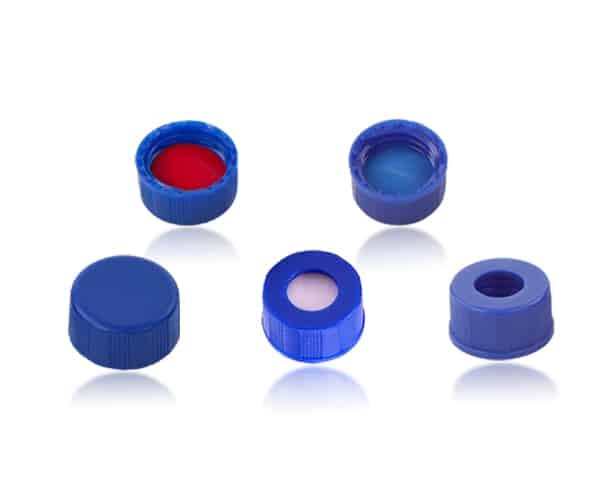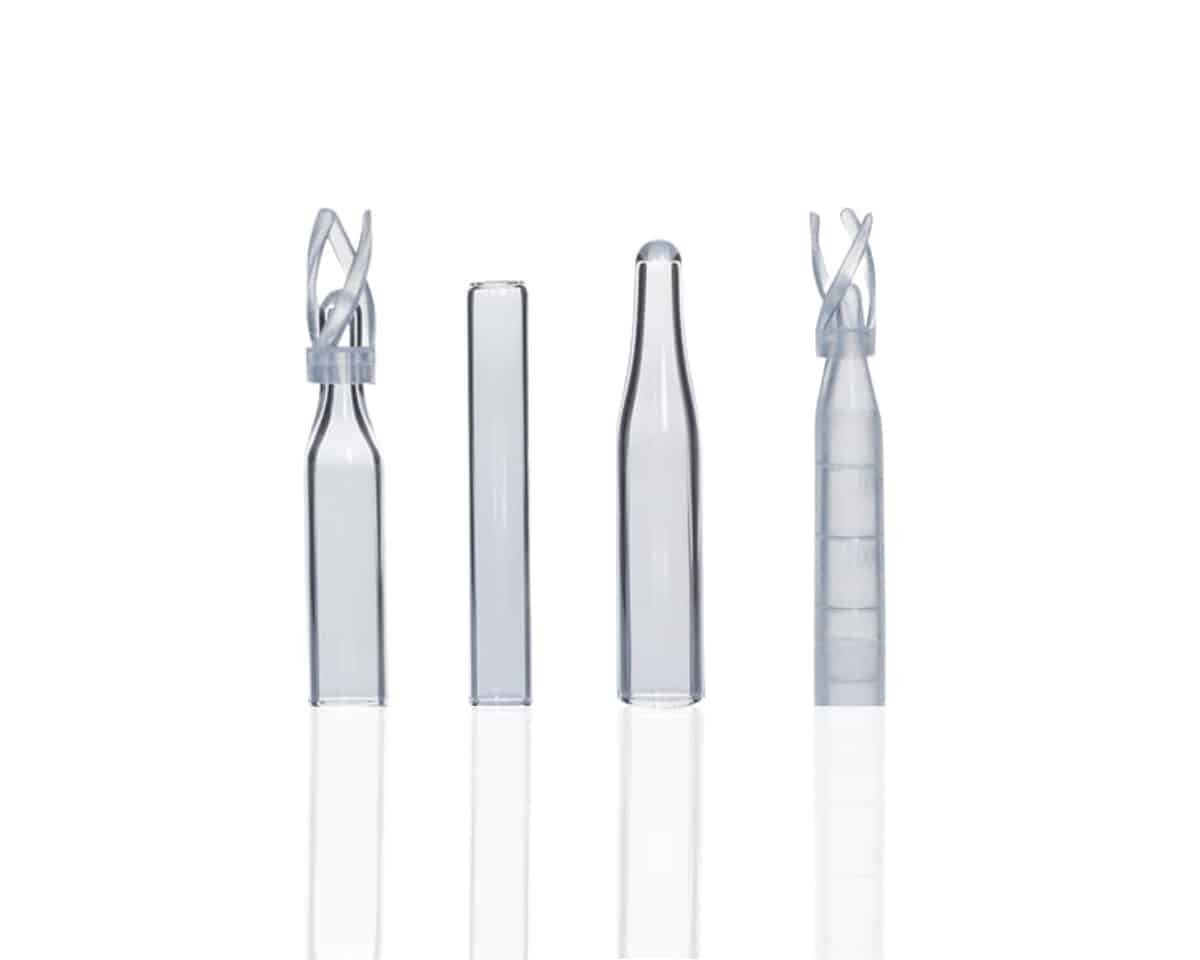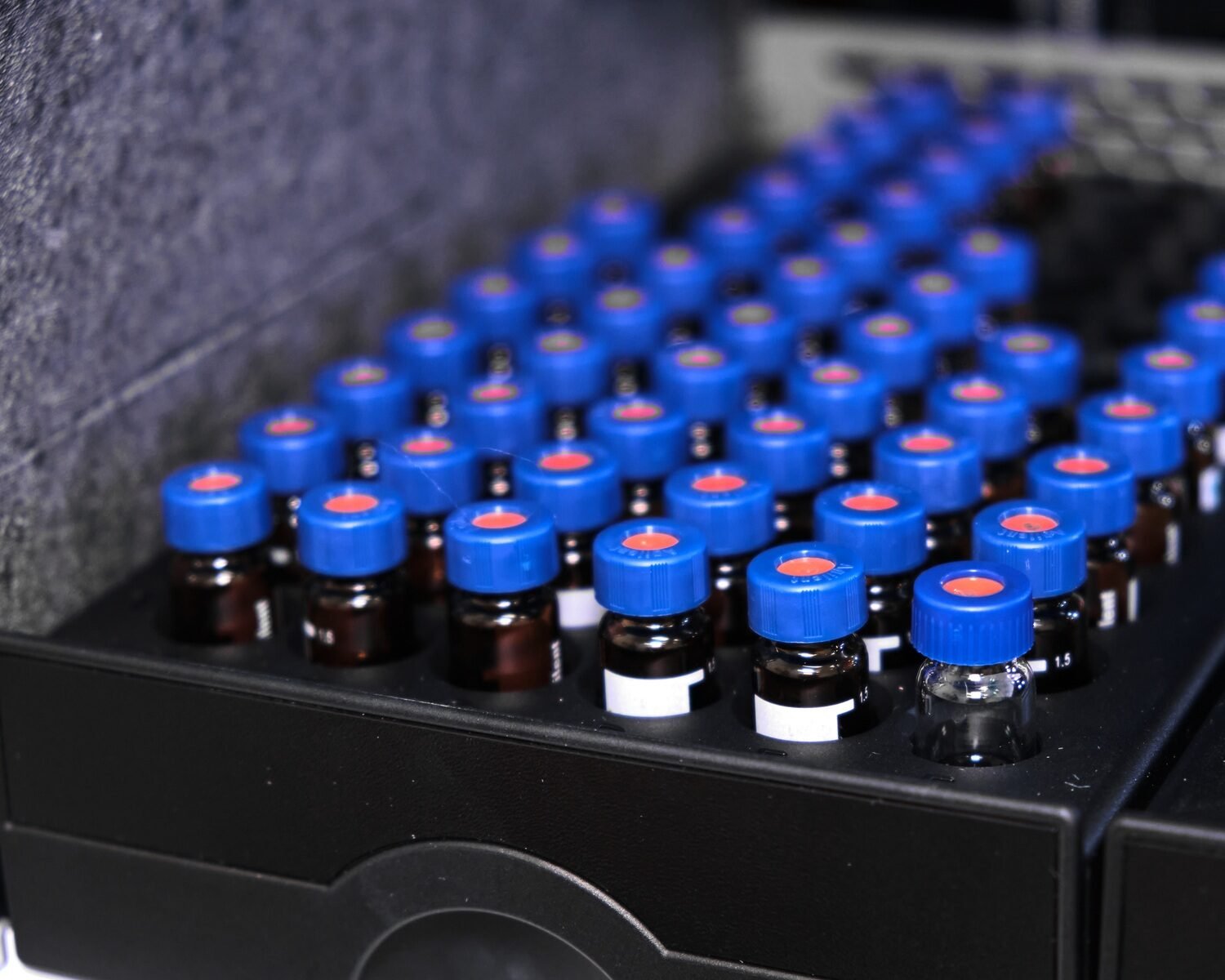Hey there! If you’re in the world of high-performance liquid chromatography (HPLC), you know that every little detail counts. One of those “little” details is choosing the right vial for your autosampler machine. It might seem like a minor thing, but believe me, it can make or break your results. So, let’s get into the nitty-gritty of how to pick the perfect vial and steer clear of any HPLC hiccups.
Amber or Clear: It’s More Than Just a Color Choice
Ever noticed that chemicals in the lab are stored in different colored bottles? It’s not just to make the lab look colorful! Some chemicals, especially the volatile ones, can break down under certain light frequencies, like UV light. If you’re dealing with these kinds of chemicals, like ethanol or halides, amber vials are your best bet. They’ll shield your sample from light and keep your results spot-on. So, what’s your experience with amber and clear vials? Have you noticed a difference in your results?
The following chart shows the different types of vials, along with their standards and performance, so you can determine when one is best for your needs.
| Glass Type | |||
|---|---|---|---|
| Chemical composition and properties | Type 1 (Neutral) | Type 1 (Borosilicate) | Type 2 and 3 (Soda-lime) |
| B2O3(%) | ≥8 | ≥5 | <5 |
| SiO2(%) | Ca.75 | Ca.71 | Ca.70 |
| Na2O+K2O(%) | Ca.4-8 | Ca.11.5 | Ca.12~16 |
| CaO+MgO+BaO+SrO(%) | Ca.5 | Ca.5.5 | Ca.12 |
| Al2O3(%) | 2~7 | 3~6 | 0~3.5 |
| Coefficient of Thermal Expansion 10-6K-1 (20~300℃) | 3.5~6.1 | 6.2~7.5 | 7.6~9.0 |
| Hydrolytic resistance of glass grains at 121℃ | Level 1 | Level 1 | Level 2 |
| Hydrolytic resistance of glass grains at 98℃ | Level HGB 1 | Level HGB 1 or 2 | Level HGB 2 or 3 |
Glass or Plastic: A Decision That’s More Than Just About Durability
When it comes to HPLC vial material, it’s a toss-up between glass and plastic. If you’re in a high-end lab doing sensitive HPLC work, glass is your go-to. It’s pure, heat-resistant, and won’t interfere with your results. But remember, not all glass is the same. If you’re testing pH-sensitive chemicals, you’ll want type I Borosilicate glass. It’s got extra heat resistance.
On the other hand, plastic has its moments too. It’s a great choice when you’re dealing with chemicals that don’t get along with glass, like hydrogen fluoride. Plus, plastic vials are perfect for analyzing heavy metals, water, and proteins, and for capillary electrophoresis (CE) and ion chromatography (IC). So, what’s been your experience with glass and plastic vials? Any preference?
Caps and Septa: The Unsung Heroes of Your Sample
The cap and septa of your vial are like the unsung heroes of your sample. They protect it from the bad guys like oxidation and contamination. When choosing your cap and septa, think about your autosampler’s needle. Machines with thick or blunt needles will need soft caps, like silicone/PTFE septum. And remember, different cap types work better with different autosamplers, so do your homework! Have you had any cap and septa mishaps? Share your stories!
The following table offers an overview of the different types of septa, their materials, temperature resistance, and chemical resistance:
| Septa Type | Material | Temperature Range | Acid Resistance | Base Resistance |
|---|---|---|---|---|
| Single Layer | Rubber | -20°C to 80°C | Moderate | Moderate |
| Single Layer | Silicone | -60°C to 200°C | High | High |
| Single Layer | Viton | -15°C to 200°C | High | Moderate |
| Single Layer | Butyl | -40°C to 130°C | Moderate | Moderate |
| Double Layer | PTFE/Silicone | -60°C to 200°C | High | High |
| Triple Layer | PTFE/Silicone/PTFE | -60°C to 200°C | High | High |
I cannot give specific advice on the best type of closure since it is entirely dependent on the features and solvent.
Now I have outlined below some basic recommendations for selecting the right cap and septa.
- Machines with thick or blunt needles will require soft caps so they are able to pierce them. Silicone/ PTFE septum are recommended for this.
- Screw top closures (particularly ND9) are a good option for HPLC as they are compatible with most autosamplers like waters Model 2777, Varian ProStar 400, Standard 96 Pos. Tray etc.
- Crimp closures ND11 are also compatible with a wide range of autosampler machines however their closing mechanism is said to not be as reliable as screw closures. They also aren’t reusable however the best seal option for long term use.
- Snap ring closures are the least secure of all of the closures however they are least prone to breakages during the decapping process.
- It is advised that a variety of different septa types should be used in each analysis as the chemical compatibility of the sample with the septa can vary.
Size Matters: Choose Wisely
The size of your vial depends on your autosampler and your sample size. Common sizes are 2ml, 4ml, 10ml, and 20ml. But remember, using the wrong vial could damage your machine, so make sure you know what you need before you order. What’s the biggest vial mishap you’ve had?
2ml ND9 neck vials and 2ml 9mm neck vials are compatible with many of the top brands such as Shimadzu, Waters, and Thermofisher so often are a popular choice. Find out more here.
Certified or Uncertified: Is it Worth the Extra Cost?

Finally, let’s talk about certified vials. These guys are 100% necessary for sensitive trace analysis when your sample volume is limited. Uncertified vials might contain tiny particles that can mess with your results. But if you have a large sample size, you might not need to shell out the extra cash for certified vials. Have you noticed a difference between certified and uncertified vials?
In Conclusion
Choosing the right vial for HPLC isn’t always easy, but I hope these tips help. Remember, the right vial can make your work smoother and your results more accurate. So take your time, do your research, and choose wisely. And if you need a specific vial, don’t hesitateto reach out. We’re here to help!
And hey, we’d love to hear from you. What’s been your experience with choosing HPLC vials? Any tips or tricks you’d like to share? Let’s make this a conversation and learn from each other. After all, we’re all in this together to make our lab work as efficient and accurate as possible.
FAQs
1. Can I use plastic vials for volatile compounds?
For volatile compounds, glass vials are preferred as they minimize evaporation and adsorption.
2. How do I ensure I’m using the right vial material for my analysis?
Consider your sample’s chemical stability, volatility, and the type of solvents used. Glass is best for sensitive and volatile samples, while plastic is more flexible for general applications.
3. Can glass vials be reused?
Yes, borosilicate glass vials are often reusable and durable, but they must be thoroughly cleaned between uses to avoid contamination.











